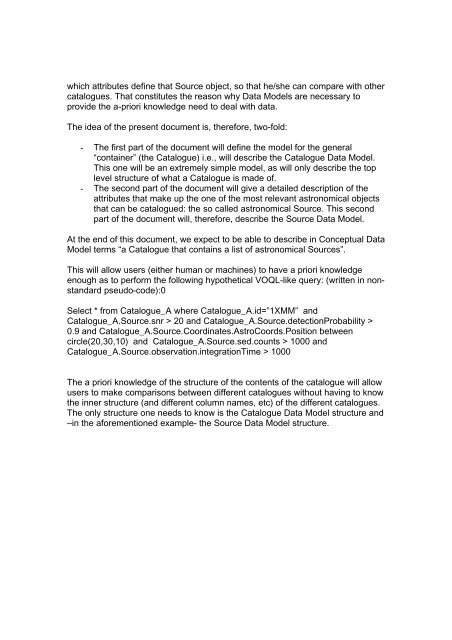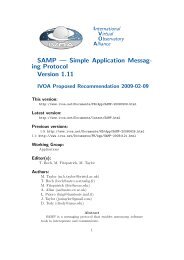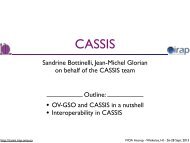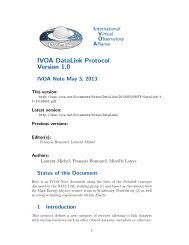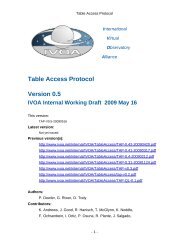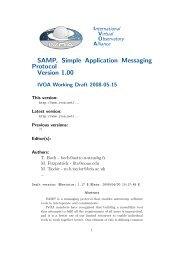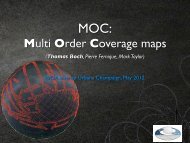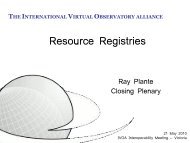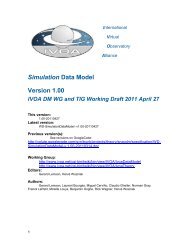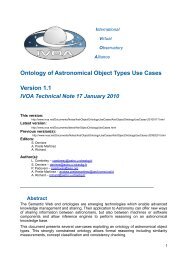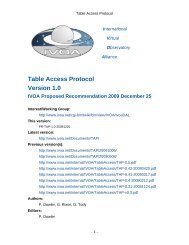IVOA Catalogue Data Model
IVOA Catalogue Data Model
IVOA Catalogue Data Model
You also want an ePaper? Increase the reach of your titles
YUMPU automatically turns print PDFs into web optimized ePapers that Google loves.
which attributes define that Source object, so that he/she can compare with othercatalogues. That constitutes the reason why <strong>Data</strong> <strong>Model</strong>s are necessary toprovide the a-priori knowledge need to deal with data.The idea of the present document is, therefore, two-fold:- The first part of the document will define the model for the general“container” (the <strong>Catalogue</strong>) i.e., will describe the <strong>Catalogue</strong> <strong>Data</strong> <strong>Model</strong>.This one will be an extremely simple model, as will only describe the toplevel structure of what a <strong>Catalogue</strong> is made of.- The second part of the document will give a detailed description of theattributes that make up the one of the most relevant astronomical objectsthat can be catalogued: the so called astronomical Source. This secondpart of the document will, therefore, describe the Source <strong>Data</strong> <strong>Model</strong>.At the end of this document, we expect to be able to describe in Conceptual <strong>Data</strong><strong>Model</strong> terms “a <strong>Catalogue</strong> that contains a list of astronomical Sources”.This will allow users (either human or machines) to have a priori knowledgeenough as to perform the following hypothetical VOQL-like query: (written in nonstandardpseudo-code):0Select * from <strong>Catalogue</strong>_A where <strong>Catalogue</strong>_A.id=”1XMM” and<strong>Catalogue</strong>_A.Source.snr > 20 and <strong>Catalogue</strong>_A.Source.detectionProbability >0.9 and <strong>Catalogue</strong>_A.Source.Coordinates.AstroCoords.Position betweencircle(20,30,10) and <strong>Catalogue</strong>_A.Source.sed.counts > 1000 and<strong>Catalogue</strong>_A.Source.observation.integrationTime > 1000The a priori knowledge of the structure of the contents of the catalogue will allowusers to make comparisons between different catalogues without having to knowthe inner structure (and different column names, etc) of the different catalogues.The only structure one needs to know is the <strong>Catalogue</strong> <strong>Data</strong> <strong>Model</strong> structure and–in the aforementioned example- the Source <strong>Data</strong> <strong>Model</strong> structure.


